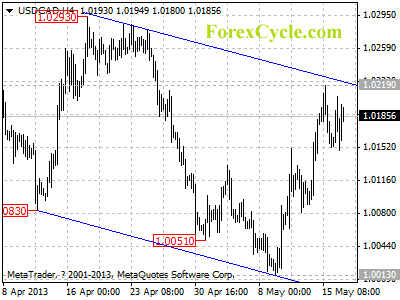By MoneyMorning.com.au
George Soros or not, the Aussie dollar has been the talk of the financial markets this week.
This morning the Aussie dollar is trading around USD$0.99.
That’s it. It’s all over. The Aussie dollar and the Aussie miracle economy have finally gotten their come-uppance after four years of bravado.
Not so fast.
We can’t tell for sure. But before the bears get too excited, we offer one note of caution – a strong currency and strong stock market don’t always go hand-in-hand…
The story now is that because the Aussie dollar has hit the skids, we can expect the Aussie stock market to follow suit.
And maybe it will. Yesterday it fell by 26 points. We’ll admit that like anyone else all we can do is take an educated guess on what will happen in the future. But like anyone else’s guess we’ve got just as much chance of being right as being wrong.
So far, we reckon we’ve got the broad trend just about right. The market has gone up…then down…then up…then down…then up.
Yet, despite the hoopla the Aussie market is still near its highest point since mid-2008. That was just before the world economy plunged into a black hole as banks failed and the bailout culture began.
Australia’s Not Selling, But Are We Buying?
Not only that, but it’s also worth remembering that one of the best performing global markets over the past year has been the US market…which also had one of the weakest currencies.
Then there’s the Japanese market, which has soared 66% since November as the Japanese yen has fallen into the toilet.
Yes, we understand those market moves are arguably more about monetary policy than the fundamental health of the respective economies or the stock market.
But given the state of the Australian federal budget, which will be in deficit for at least another four years (notice how the projected return to surplus is forecast for after the 2016 election), and the Reserve Bank of Australia’s willingness to follow international rates lower, can you really rule out another stock surge?
Granted, we’re not about to bet the family silver on a 50% or 66% stock rally.
But stocks are still only just below the recent high point. And they’re still in the sideways trading range we expect to see continue for the rest of the year. That means we’re in no hurry to sell stocks here.
In fact, with the market holding at the top of the range, we’re re-considering our stance of not buying the market at this level.
As we say, we could be wrong and stocks could go into free-fall. But if you’ve balanced your savings across a number of asset classes (as we’ve long advised, and a strategy my old pal Dan Denning has written about here), even if stocks fall it shouldn’t leave you with a big hole in your pocket.
But by the same token, pulling out of the market now without any evidence that stocks are set to plummet could see you miss out on further gains.
So how should you play it?
Dividend Stocks are for Keeps
Well, that’s easy. As far as we’re concerned, your dividend stocks should be ‘keepers’. There’s no need to sell them (although there’s no harm in taking a little bit of profit). So you can put the dividend stocks to one side.
As for what you should buy. If you can find a good dividend stock that hasn’t had a good run, or one where you expect it to increase dividends, then perhaps looking at scaling in. That is, if you normally invest $5,000 in a stock, just buy one-third that amount to start with.
If stocks fall, then you can buy another third, say at a point 5% below your initial entry price. And then invest the final third when the stock appears to have some clear direction.
Of course, if it looks like the stock and the market is heading down the toilet then you shouldn’t buy the extra amounts, and maybe you’d consider selling what you’ve bought.
On the other hand, if the stock rises then at least you’ve picked up some of the gains and you get to buy more stock in a rising market.
You can use that same ‘scaling in’ strategy for blue-chip or small-cap growth stocks too.
When Things Look Bad, Stocks Are Cheap
Look, it’s a tough market to predict. We certainly don’t want to give you the false impression that everything’s fine, because it isn’t. But you should also remember that the situation has been much, much worse in the US, Europe, and Japan, yet they’ve seen some of their best moves in years.
Investors who sold out too soon or refused to buy into the rally are doubtless kicking themselves. Don’t let that happen to you.
If you remain an active investor, understand the risks of investing, and invest responsibly, there’s no reason why you can’t make money on the Aussie market while still protecting your investments if things go sour.
Cheers,
Kris
Join me on Google+
PS: If you believe the papers you’ll think a falling Aussie dollar is a disaster for savers and investors. But what you seldom read is a way to protect your investments or even profit from it. In today’s Money Morning Premium, Kris shows one of many simple ways to protect your wealth from a falling dollar. Click here to upgrade now.
From the Port Phillip Publishing Library
Special Report: IT’S A TRAP
Daily Reckoning: Down the Warped Path of Regular Deficits
Money Morning: How the Aussie Dollar is Running Out of Friends, Fast
Pursuit of Happiness: What Drives Entrepreneur’s and Inventors
Australian Small-Cap Investigator:
How to Make Money From Small-Cap Stocks



